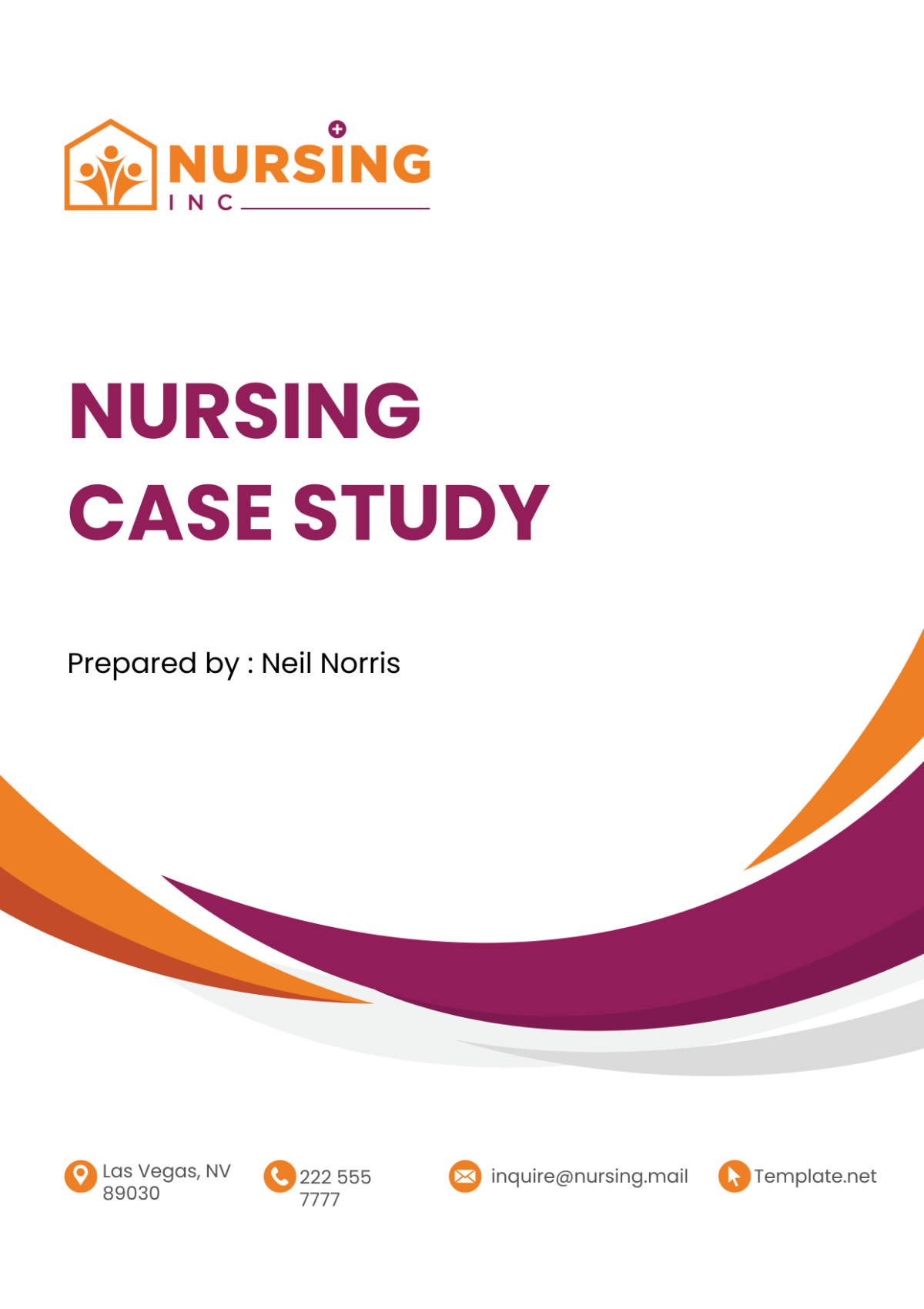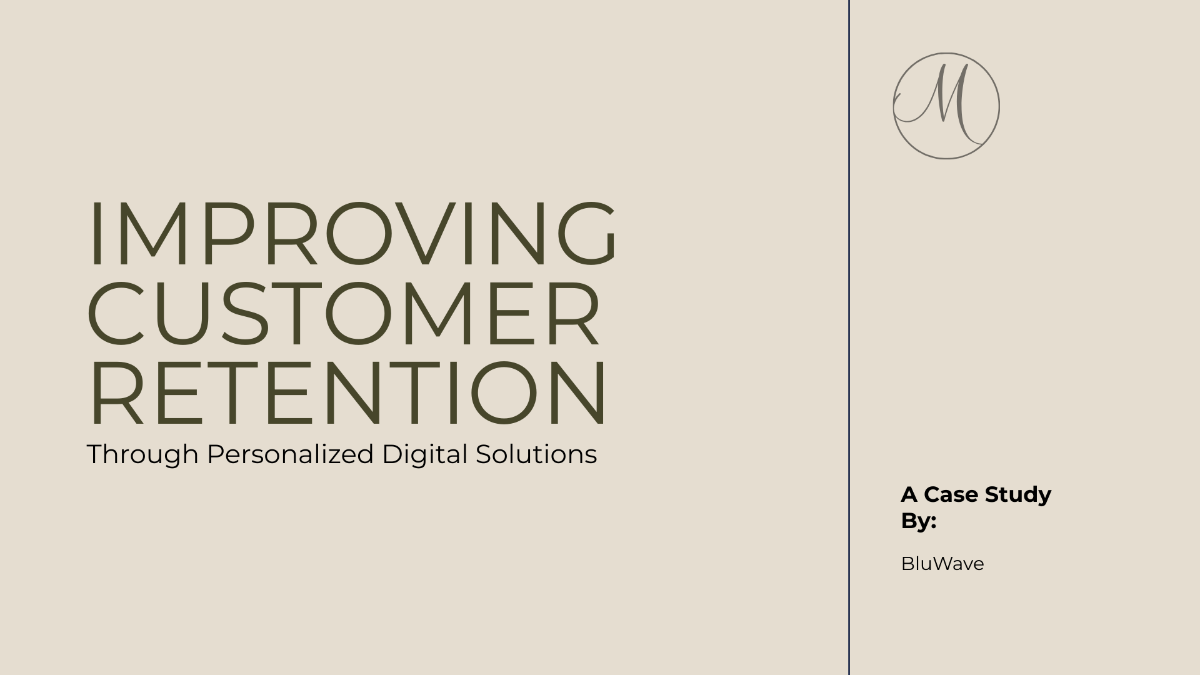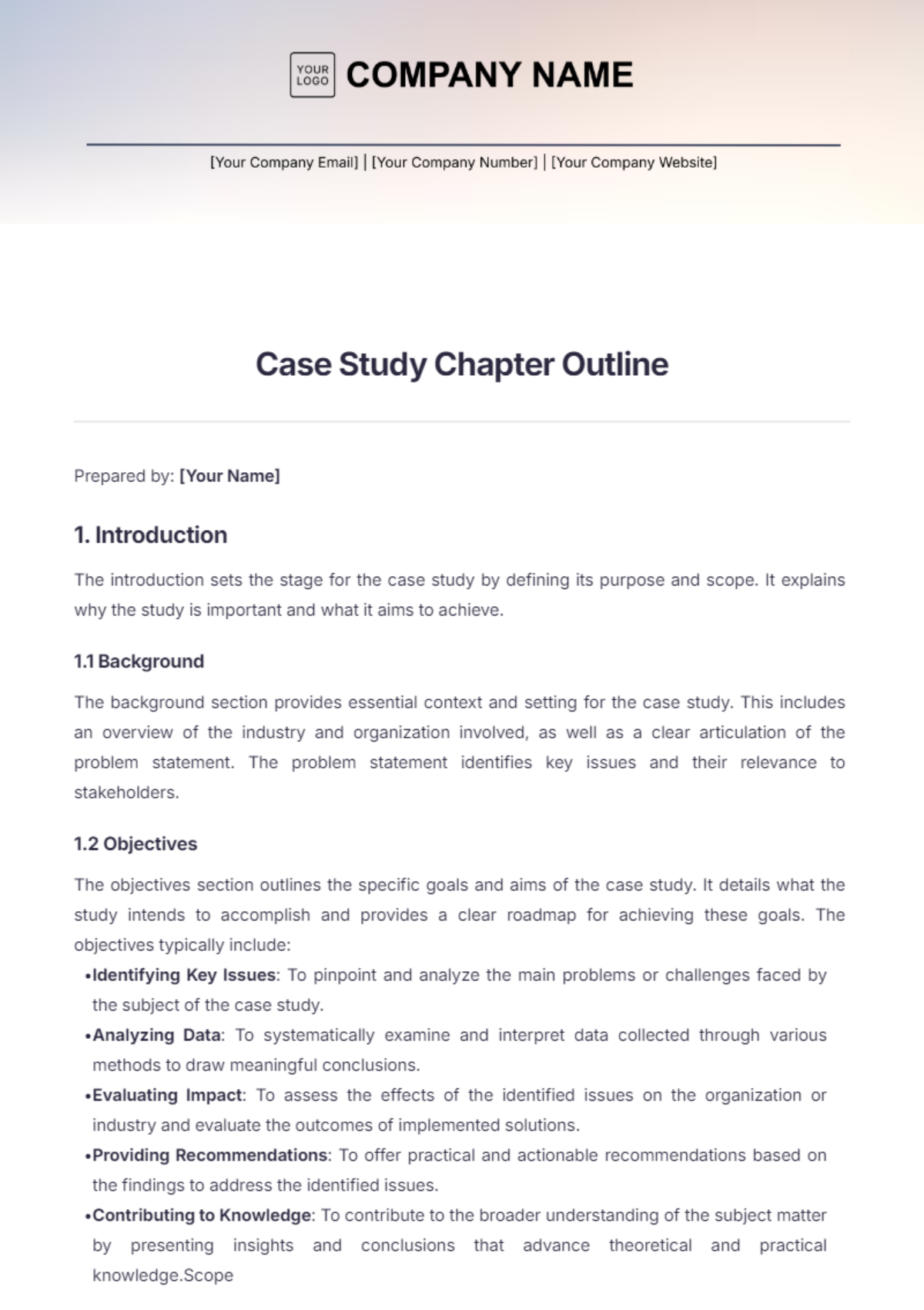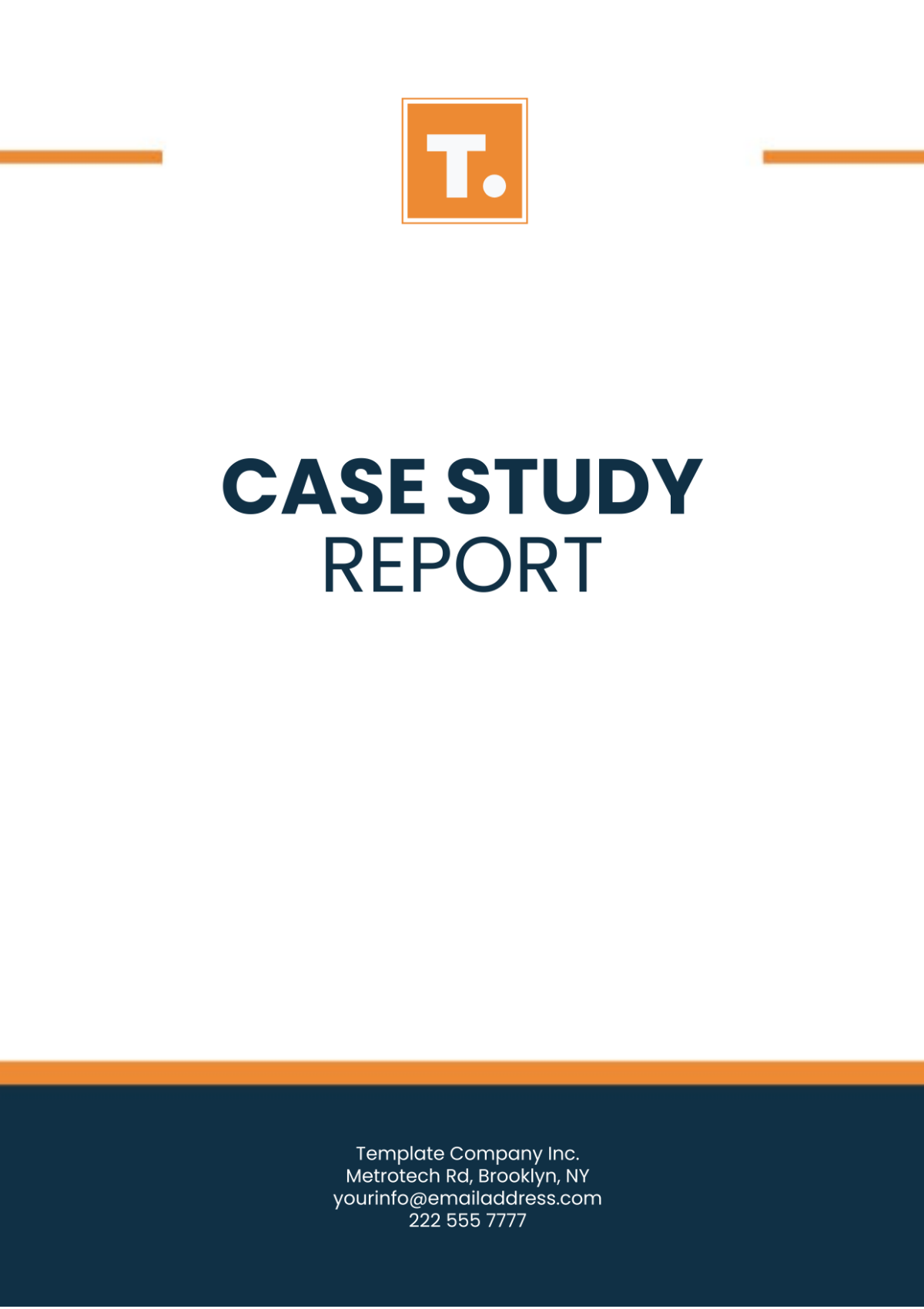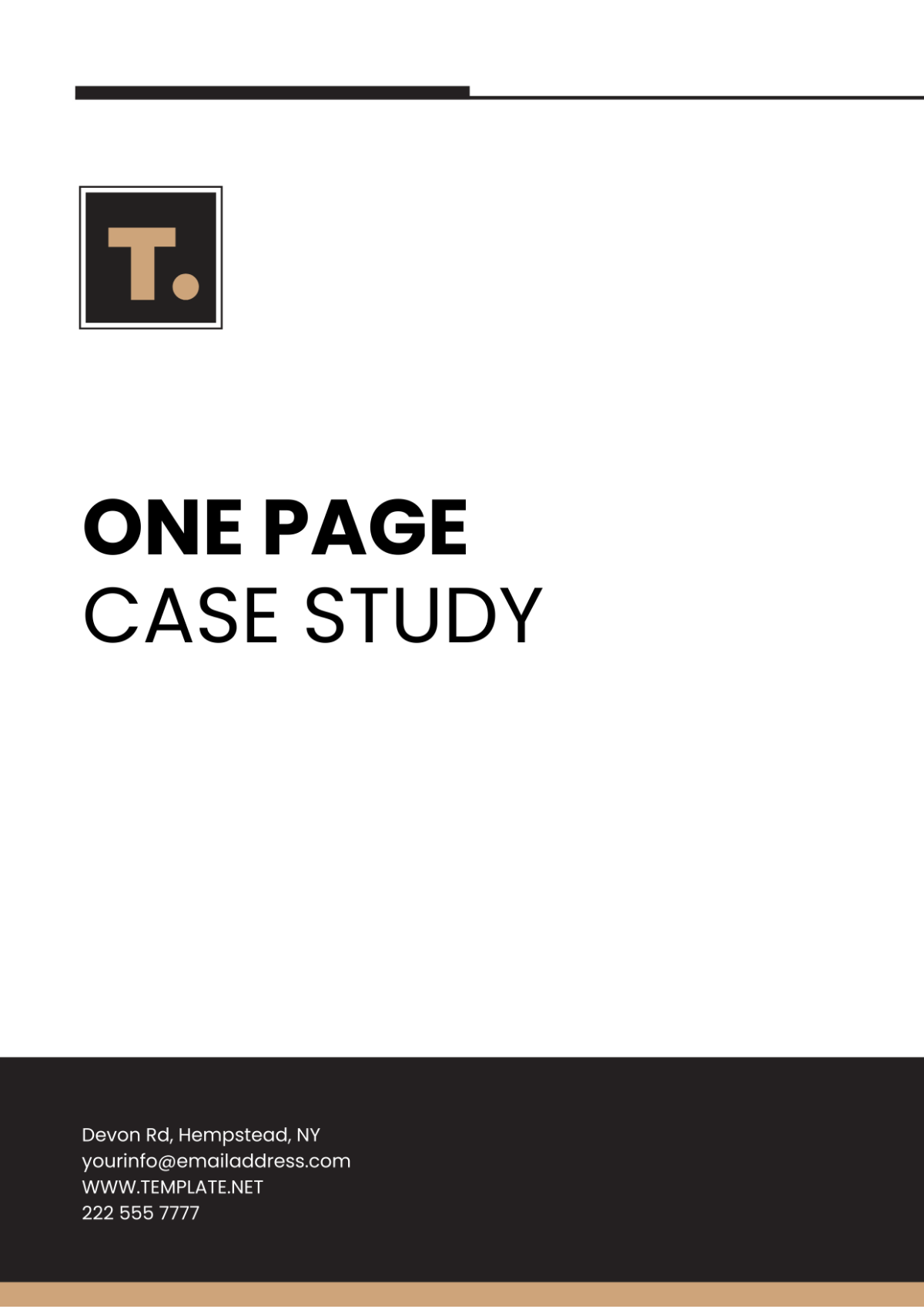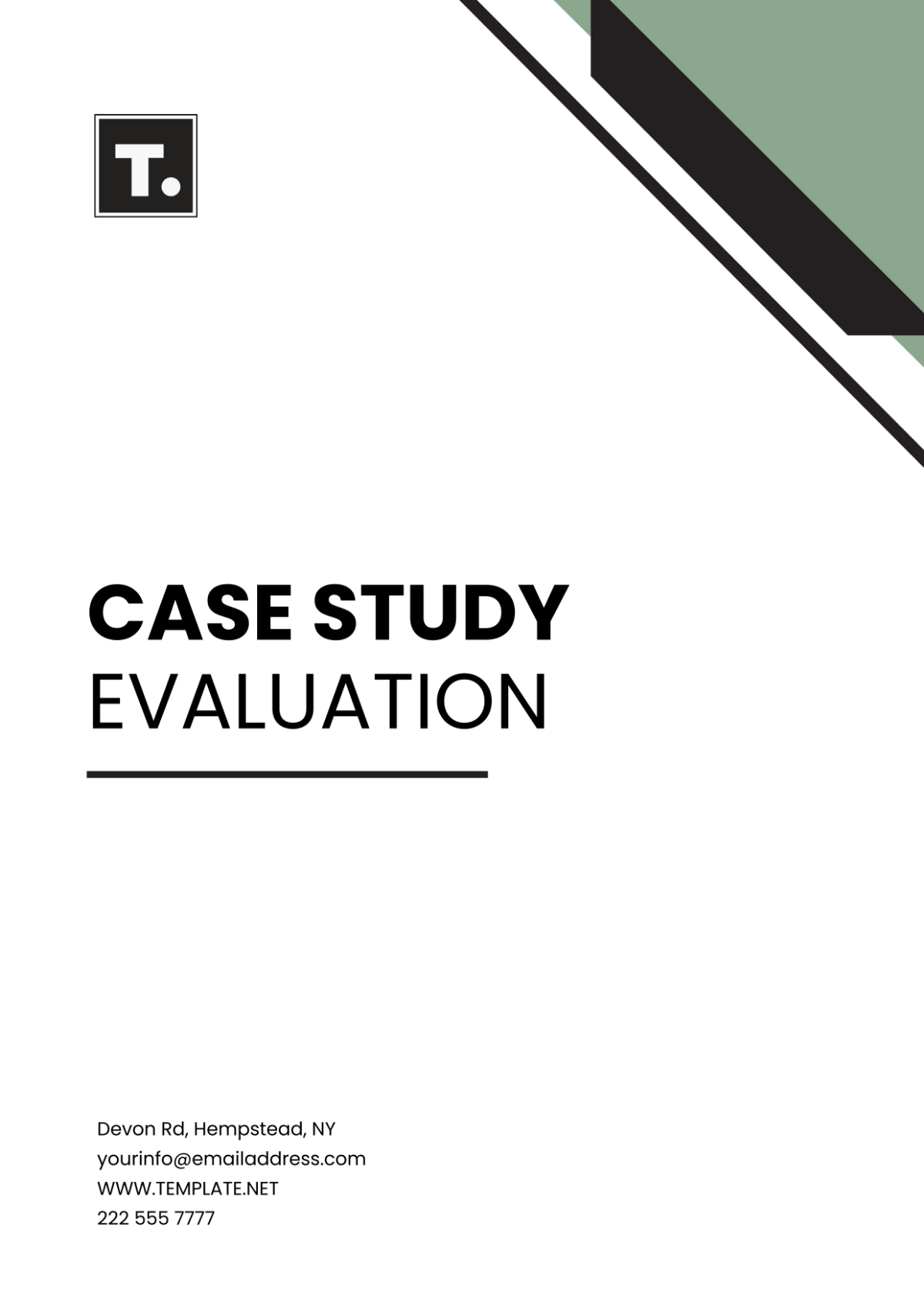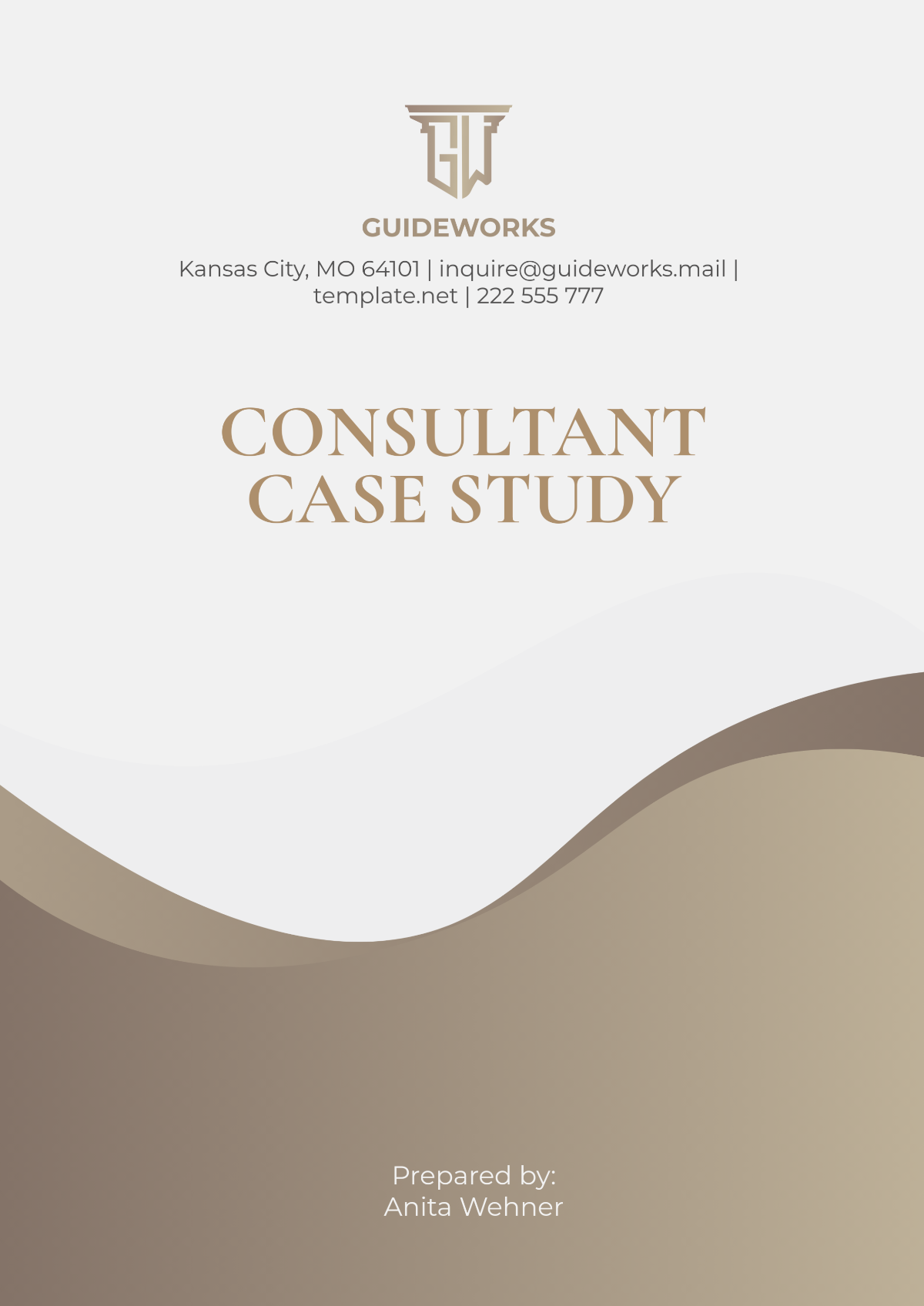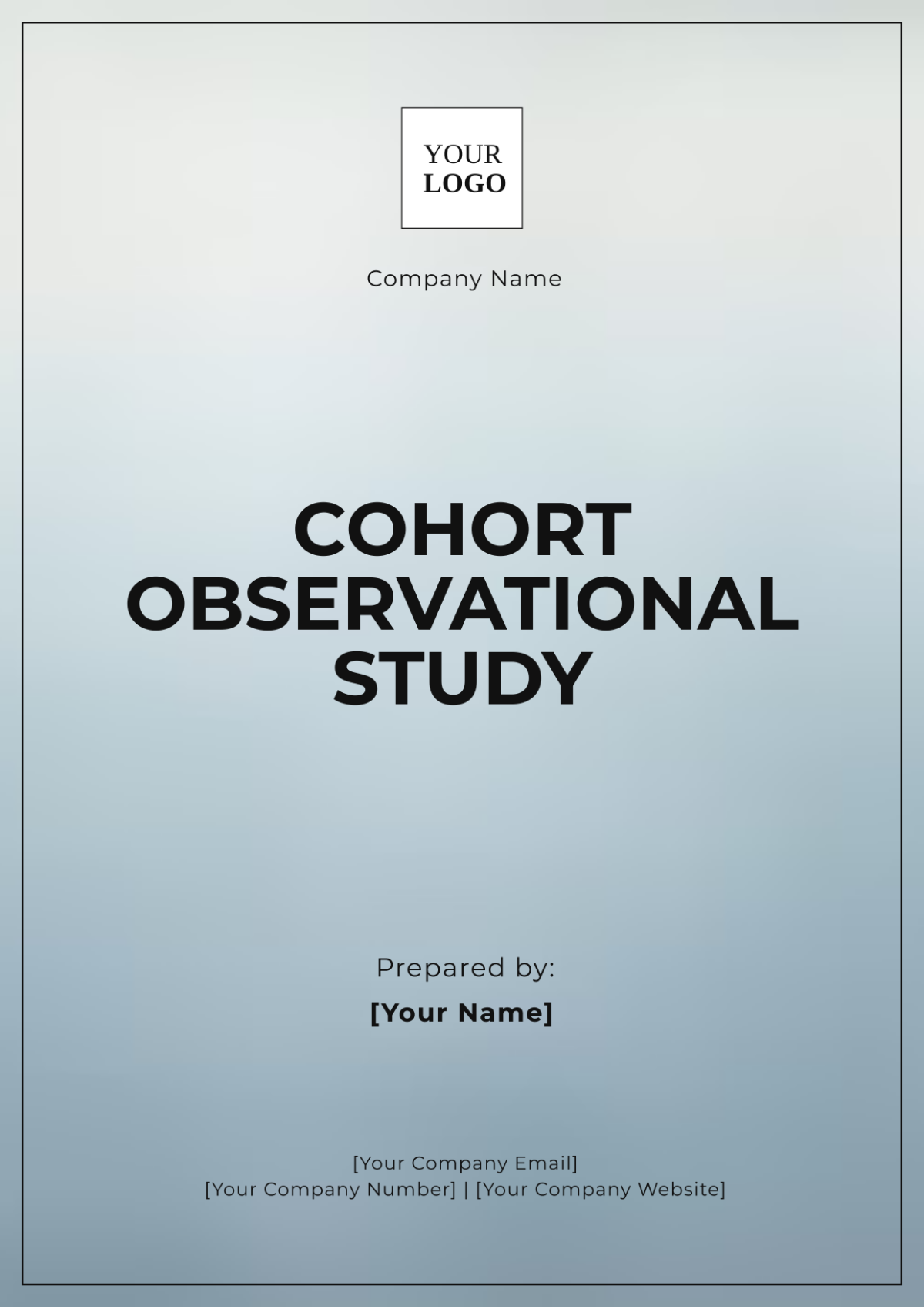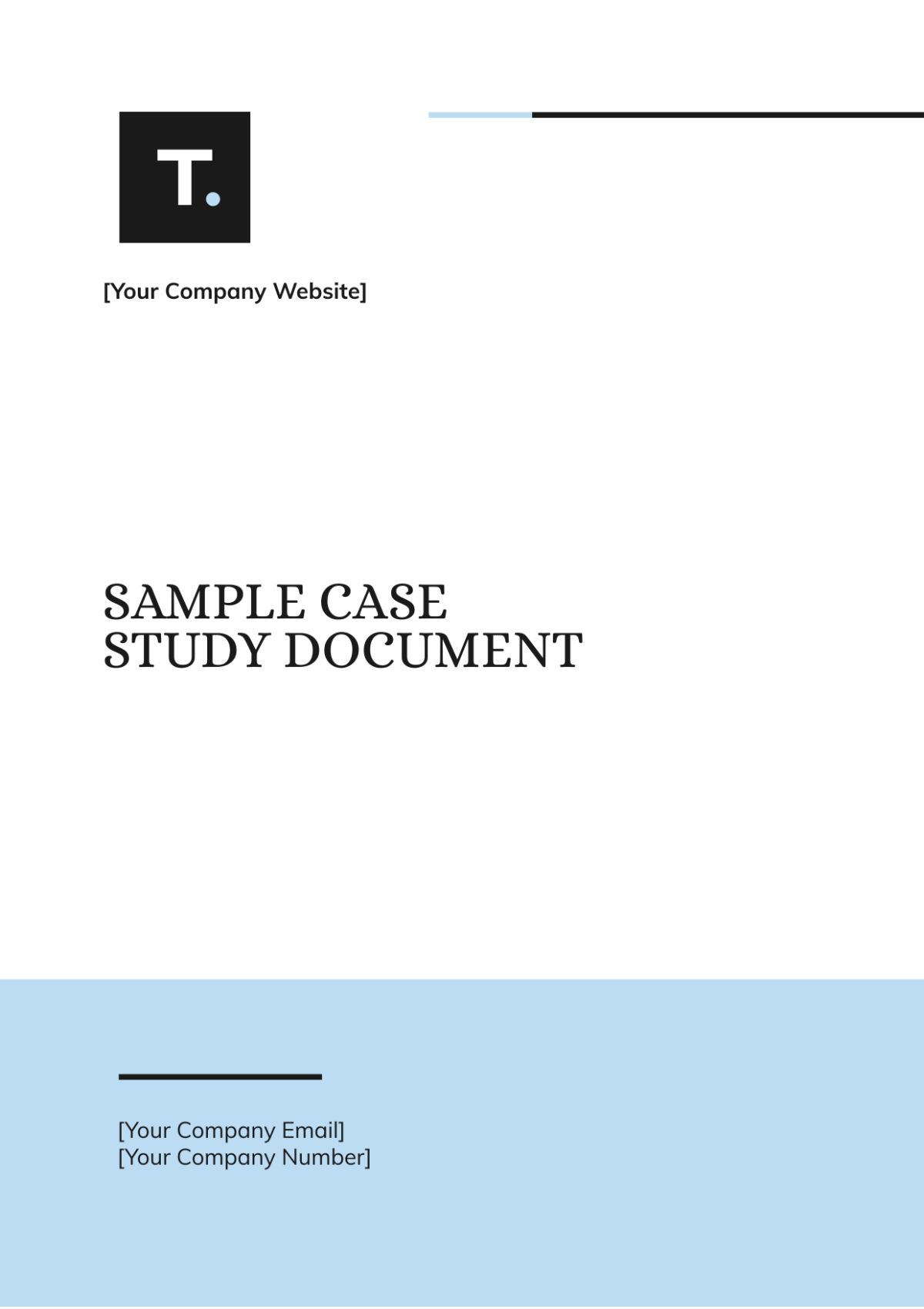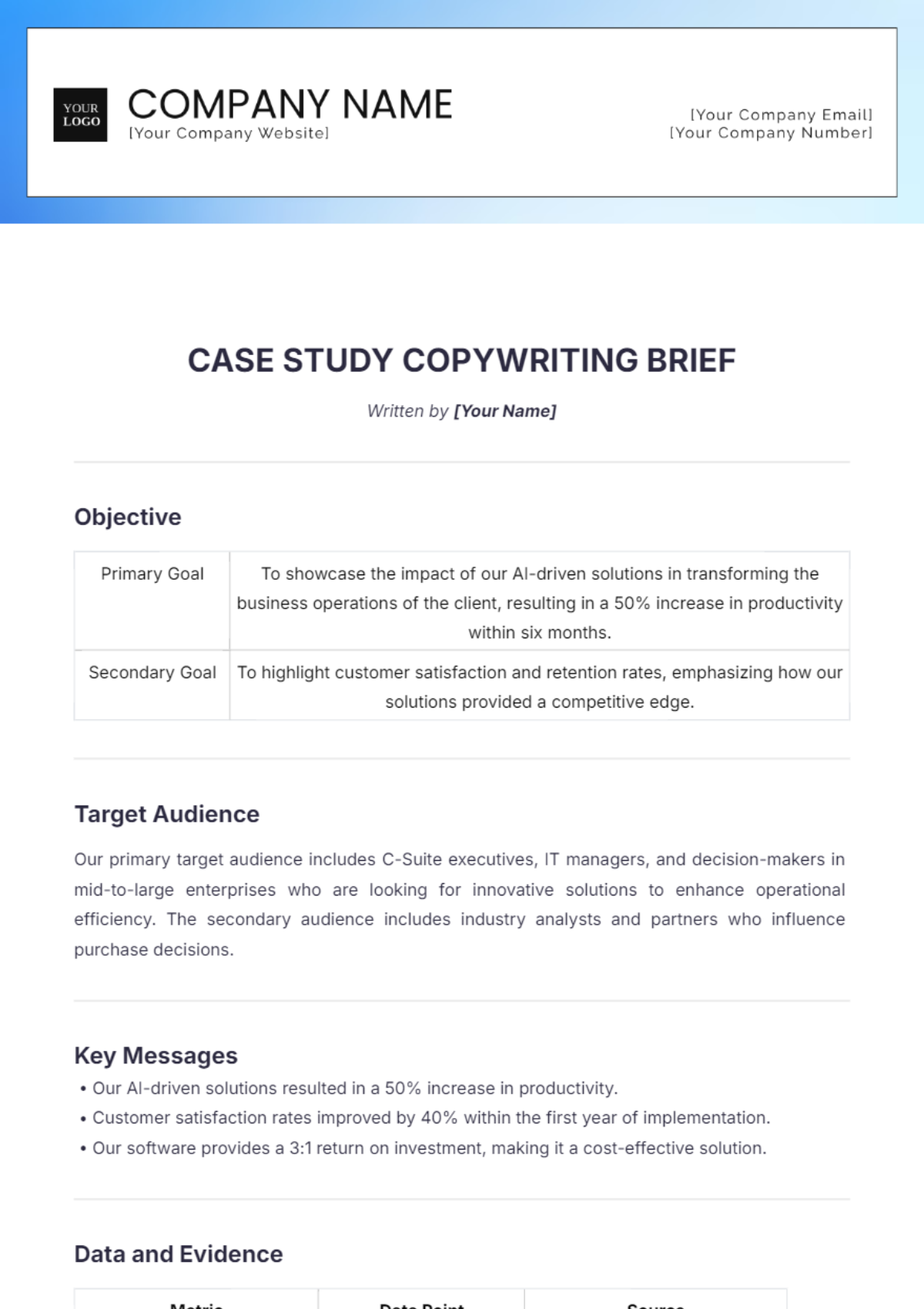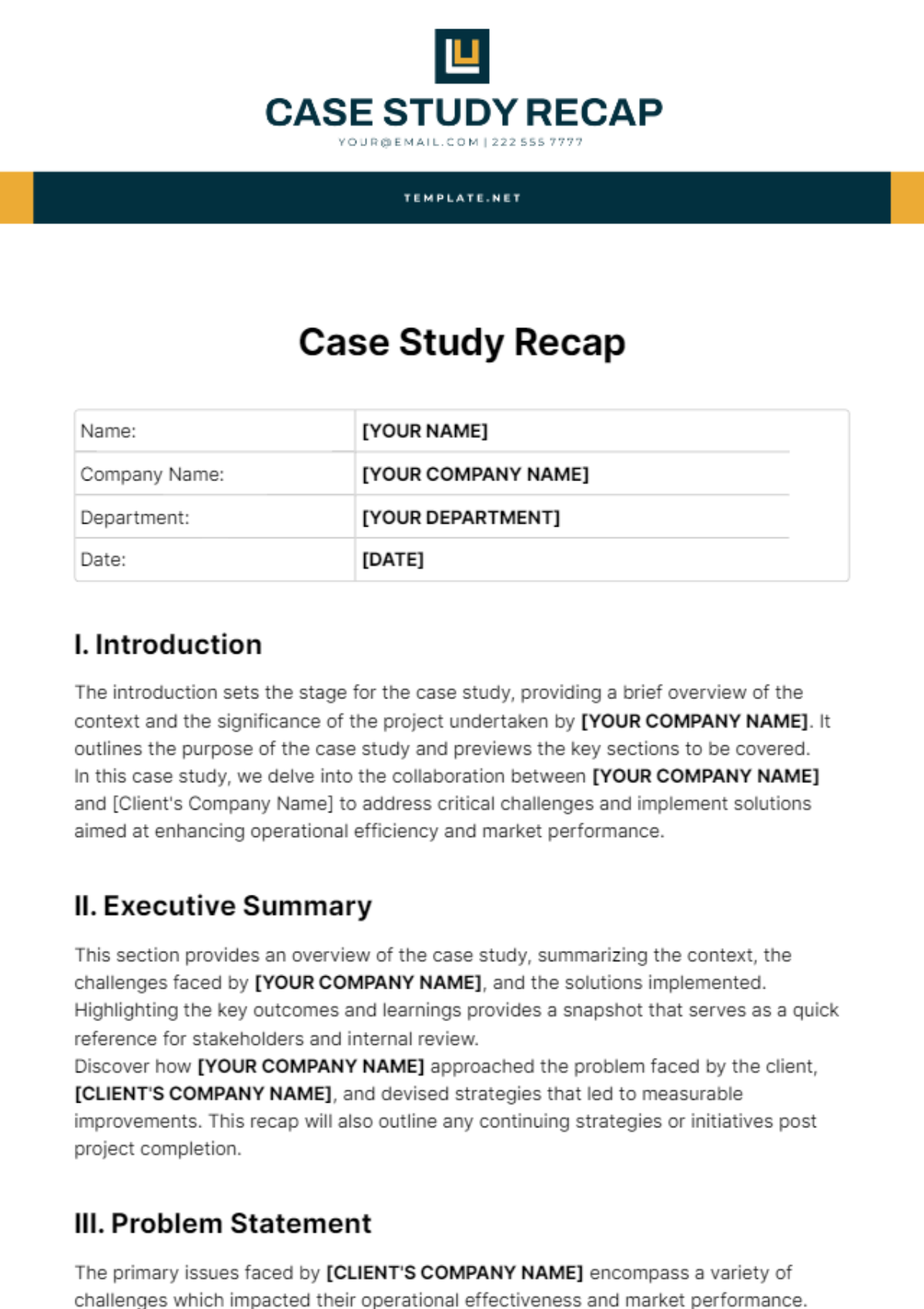Sales Key Customer Case Study
I. Introduction
[Your Company Name] has long recognized the importance of customer segmentation in optimizing its sales and marketing endeavors. Specifically, the management's focus on key customers has always been a cornerstone of the company's overall business strategy. This case study is an extension of that focus and aims to critically analyze the sales impact of key customers by employing a multi-pronged approach that includes both qualitative and quantitative research methodologies.
II. Executive Summary
This comprehensive case study aims to provide an in-depth analysis of the role that key customers play in shaping the sales and revenue landscape for [Your Company Name]. Over a span of four years, from 2050 to 2053. These findings collectively indicate that key customers serve as the cornerstone for sustainable financial performance and market resilience. Thus, the study accentuates the need for specialized attention to this customer segment as a part of the company's broader strategic goals.
III. Methodology
The methodology employed in this case study is designed to offer a rigorous and comprehensive examination of the role key customers play in influencing sales outcomes at [Your Company Name]. Utilizing a mix of qualitative and quantitative research methods ensures a holistic view that takes into account both numerical metrics and contextual insights. Below are the details of the methodologies used:
A. Quantitative Research
Data Collection: Sales data from 2050 to 2053 was meticulously collected from the company’s internal databases. The data was then segregated into two primary segments: key customers and regular customers.
Metrics Analyzed: The primary metrics scrutinized in this study include total revenue, customer retention rates, and average order value (AOV). These metrics were chosen due to their direct relevance to sales performance and customer engagement.
Statistical Analysis: Advanced statistical techniques, such as trend analysis and correlation coefficients, were used to identify patterns and relationships among the selected metrics.
B. Qualitative Research
Customer Interviews: Semi-structured interviews were conducted with a sample of key customers to gain deeper insights into their preferences, pain points, and expectations.
Surveys: Online surveys were administered to both key and regular customers. These surveys included questions about customer satisfaction, product quality, and the effectiveness of the company’s customer service.
Focus Groups: A select group of key customers participated in focus group discussions. These sessions were aimed at understanding the customer experience in a more interactive setting.
C. Data Validation
To ensure the reliability and validity of the findings, data triangulation was employed. This involved cross-referencing the quantitative data with the insights obtained from qualitative research. Any discrepancies were further examined to determine their root causes.
D. Limitations
While every effort was made to ensure the accuracy and comprehensiveness of this study, it is acknowledged that the findings are subject to the limitations of the data and the time period analyzed.
By employing a multi-methodological approach that incorporates both qualitative and quantitative tools, this study aims to offer a nuanced understanding of the behavior and economic impact of key customers on [Your Company Name].
IV. Results
The results provide a detailed analysis of the data collected from the year 2050 to 2053, by evaluating various sales metrics, including total revenue, customer retention rates, and AOV.
A. Revenue Contribution by Customer Segment
The table below presents the revenue contribution:
Year | Key Customers | Regular Customers | Total Revenue |
2050 | $300,000,000 | $200,000,000 | $500,000,000 |
Since 2050, key customers have consistently accounted for more than 60% of the company's total revenue. It's evident that their contribution has steadily increased year-over-year. This upward trend underscores the critical role that key customers play in driving revenue growth.
B. Customer Retention Rates
The data above illustrates a remarkable level of customer loyalty among key customers, with retention rates rising from 90% in 2050 to 95% in 2053. In contrast, the retention rates for regular customers have slightly declined over the same period.
C. Average Order Value Analysis
Highlighted below is the analysis of order value in the respective years:
Year | Key Customers | Regular Customers |
2050 | $1,200 | $300 |
The data above reveals a progressive increase in the average order value (AOV) for key customers. Beginning at $1,200 in 2050 and rising up in the following years, the data demonstrates that key customers not only buy more frequently but also make more substantial purchases.
D. Summary of Key Findings
Revenue Contribution: Key customers have a dominant and growing role in contributing to the company's total revenue, emphasizing their crucial significance in the sales strategy.
Retention Rates: Higher retention rates among key customers as compared to regular customers highlight the success of targeted customer engagement strategies.
Average Order Value: The consistent growth in AOV for key customers signals their propensity to invest more in the company's products or services.
In summary, the results indicate that key customers are indispensable to the financial performance and market sustainability of [Your Company Name]. Their continued loyalty and increasing economic contribution create a compelling case for maintaining targeted and effective engagement strategies with this customer segment.
V. Discussion
The data collated offers multifaceted insights into the relationship between key customers and the sales performance of [Your Company Name]. This part will delve into the implications of these results, providing an analytical interpretation of the findings and their impact on the business. Each key metric will be discussed in depth to offer a more nuanced understanding.
A. Revenue Contribution
The data presented unmistakably illustrates that key customers are not just revenue contributors but rather major revenue drivers for the company. Their consistent year-over-year growth in contribution towards total revenue reflects not merely loyalty but also an increasing dependence of the company on this customer segment for financial stability. The data strongly suggests that key customers are an economic pillar for the company and necessitates special strategic focus.
B. Customer Retention
The retention rates for key customers are significantly higher than for regular customers. This not only serves as an indicator of customer satisfaction but also as an exemplar of effective customer relationship management targeted at this segment. High retention rates typically equate to lower customer acquisition costs and higher lifetime value, providing a compounded economic benefit to the company. The rise in these rates from 90% to 95% over the study period further underscores the effectiveness of specialized engagement programs aimed at key customers.
C. Average Order Value
The data shows a rising trend in the average order value (AOV) from key customers. This is an important metric as it directly influences profitability. The growth in AOV is indicative of a strong product-market fit and suggests that the company’s offerings are increasingly aligning with the needs and purchasing power of key customers. This upward trajectory is likely a result of tailored marketing strategies and product packages that resonate with this customer segment.
D. Intersection of Metrics
One key observation is the positive correlation between high retention rates and increasing AOV among key customers. This suggests that [Your Company Name]'s efforts to engage with this segment have led not only to brand loyalty but also to an increased willingness to invest in the company's products or services. The intersection of these metrics reinforces the notion that sustained and specialized efforts in customer engagement can result in multiple, complementary benefits.
E. Strategic Implications
The implications of these findings are far-reaching and have critical strategic ramifications. High retention rates and rising AOV suggest that investment in customer relationship management, particularly for key customers, offers a strong return on investment. The data compels a re-evaluation of how resources are allocated in sales and marketing efforts, advocating for a disproportionate focus on key customers.
In conclusion, the discussion reiterates that key customers are of paramount importance to [Your Company Name]'s sales performance and overall business health. They contribute significantly to revenue, exhibit higher levels of loyalty, and demonstrate a tendency to increase their financial commitments over time. Hence, a specialized and nuanced approach is essential for maintaining and further nurturing these relationships for long-term business sustainability and growth.
VI. Recommendations
Based on the thorough analysis conducted in the preceding parts, it is apparent that key customers serve as a critical asset in [Your Company Name]'s business model. Below are tailored recommendations to further optimize the company's engagement with this invaluable customer segment.
Focus on Personalized Marketing Strategies: Given the high retention rates and increasing AOV among key customers, it would be prudent to invest in personalized marketing strategies. Utilizing machine learning algorithms can help identify specific buying patterns and preferences, enabling the creation of custom offers and promotions that resonate with this segment.
Enhance Customer Relationship Management (CRM) Systems: The existing CRM systems should be enhanced to include features that track the lifetime value and purchase behaviors of key customers. These insights can inform future interactions and offers, ensuring a consistent and enriching customer experience.
Develop Key Customer Loyalty Programs: Considering the high retention rates observed, the introduction of a loyalty program targeted specifically at key customers can further solidify their engagement with the brand. This could include exclusive discounts, early access to new products, or specialized customer service options.
Allocate Resources for Key Customer Engagement: Given the significant revenue contributions from this segment, it is advisable to allocate a larger share of the sales and marketing budget specifically for key customer engagement. This could involve recruiting a dedicated team to manage key accounts or investing in advanced analytics tools for more precise targeting.
Periodic Review and Feedback Mechanism: To ensure that the implemented strategies remain effective, a regular review mechanism should be established. This could involve quarterly customer surveys and annual in-depth interviews with key customers to garner feedback and identify areas for improvement.
Training and Development: Equip sales and customer service teams with specialized training modules focused on managing key customer relationships. This should include learning the nuances of effective communication and problem-solving strategies particularly beneficial for engaging key customers.
Risk Mitigation Plans: Given the significant financial reliance on key customers, risk mitigation plans should be in place to manage scenarios such as customer churn or sudden drops in order value. Contingency planning should include strategies like diversification of product offerings or creating backup engagement plans.
By implementing these recommendations, [Your Company Name] can not only sustain but also potentially augment the financial contributions made by key customers. These strategies, aimed at strengthening the relationship with this pivotal customer segment, should be integral components of the company’s long-term planning and resource allocation.
VII. Conclusions
The data presented in this case study strongly suggests that key customers are instrumental in driving sales and overall revenue growth for [Your Company Name]. Their higher retention rates and AOV contribute to both short-term gains and long-term stability. Therefore, maintaining strong relationships with this segment should continue to be a strategic priority for the company.







